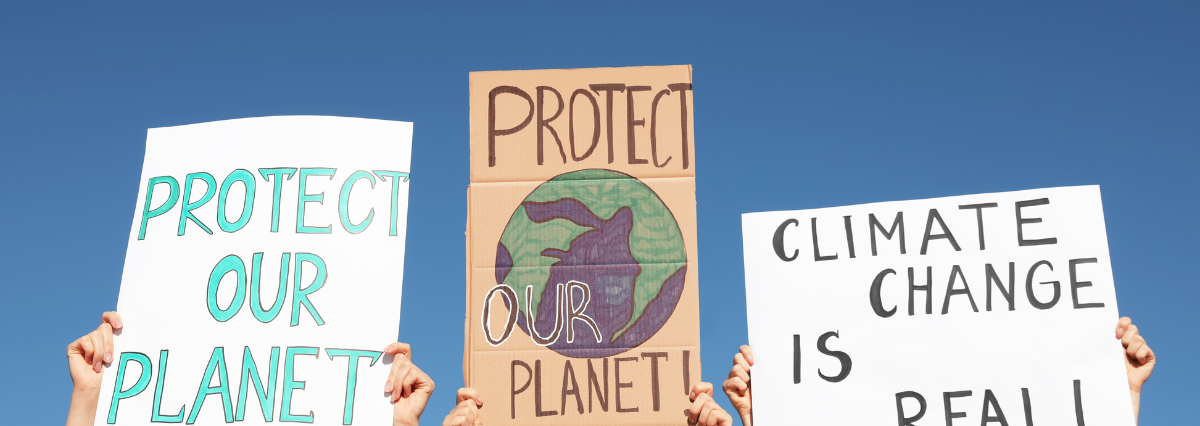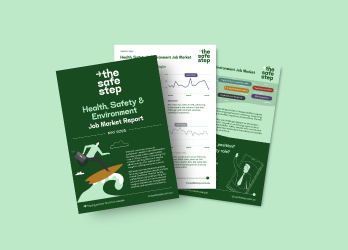How Climate Change Impacts Worker Health and Safety
Page Published Date:
May 17, 2024
As our planet's temperature rises, the risks to worker health and safety are rising too. Discover how climate change is creating new workplace hazards and what HSE leaders and executives must do to protect their people and build resilient organisations.

Australia and the world are increasingly feeling the impacts of climate change, from record-breaking heatwaves to devastating bushfires and floods. These escalating environmental threats pose significant challenges for businesses and their ability to thrive in the future. As an HSE professional or business leader, being aware of the risks and planning ahead to safeguard the health and safety of your people is not just a legal obligation, but a moral imperative.
Heat Stress Dangers
Global warming is turning up the heat, quite literally, on many work environments. Outdoor workers in sectors like construction, agriculture, and mining face heightened risks of heat exhaustion, heat stroke, and other heat-related illnesses. But indoor workplaces without adequate cooling aren't immune either.
To beat the heat, HSE leaders must:
- Conduct thorough heat stress risk assessments considering temperature, humidity, workload, and PPE
- Implement engineering controls like shade structures, fans, and ventilation
- Ensure workers stay hydrated and take sufficient rest breaks in cool areas
- Train all staff to recognise the signs of heat-related illnesses and administer first aid
Reducing heat stress risks isn't just about worker safety - heat can impair performance and decision-making too, impacting productivity. In fact, 6 out of 10 Australian businesses are already being negatively affected by extreme heat, at an estimated cost of $8.1 billion per year.[^1]
Hazardous Air Quality
Worsening bushfires and dust storms fuelled by climate change are taking a serious toll on air quality. Exposure to particulate matter, ozone, and other pollutants can cause both acute and chronic respiratory issues, from coughing and wheezing to reduced lung function.[^2] Under Australian WHS Regulations, employers have a duty to ensure air quality in the workplace is safe.[^3]
Protecting workers demands a proactive approach:
- Install air quality monitors and establish action levels for implementing controls
- Ensure adequate ventilation and filtration, especially for indoor work areas
- Provide appropriate respiratory PPE and train workers on proper usage
- Limit outdoor work and have a plan to relocate workers when air quality deteriorates
Organisations that fail to manage air quality hazards leave themselves open not just to WHS penalties, but also potential workers' compensation claims, absenteeism, and reduced productivity.
Planning for Natural Disasters
The devastating bushfires and floods in recent years are a stark reminder that climate change is supercharging natural disasters. These events not only threaten worker safety but can severely disrupt supply chains. As an HSE leader, you can't stop extreme weather, but you can stop it from harming your people and paralysing your business.
Disaster preparedness is key:
• Develop emergency response plans covering evacuation, shelter-in-place, and crisis communications.
• Regularly review and update plans to reflect evolving risks.
• Conduct drills to stress-test your procedures and ensure staff know their roles.
• Have a business continuity plan to get back up and running post-disaster.
• Identify alternative suppliers and transport routes to minimise supply chain disruption.
The costs of being under-prepared for disaster can be immense. The Black Summer bushfires alone are estimated to have cost Australian businesses over $2 billion in disruption and lost productivity.[^4]
Vector-borne Diseases
A warming climate is expanding the range of disease-carrying pests like mosquitoes and ticks.[^5] For outdoor workers, this means a growing risk of contracting illnesses such as Ross River virus and Lyme disease.
To protect your team:
• Educate workers on the risks and symptoms of vector-borne diseases in your area.
• Provide insect repellent and encourage workers to wear long sleeves and pants.
• Control mosquito breeding sites by removing stagnant water.
• Include vector-borne diseases in your first aid training and equipment.
Mental Health Impacts
The physical risks of climate change are compounded by the mental health toll. Experiencing a natural disaster can lead to anxiety, depression and PTSD.[^6] Even those not directly affected may feel eco-anxiety about the state of the planet.
Supporting mental wellbeing requires:
- Fostering a workplace culture that destigmatises mental health issues
- Training managers to recognise signs of mental distress and offer support
- Providing access to counselling services and Employee Assistance Programs (EAPs)
- Communicating openly about climate risks and your organisation's resilience plans
Building Resilient Organisations
Ultimately, becoming a resilient organisation that can withstand climate shocks requires embedding HSE into your business strategy and culture. Some crucial steps:
- Establish a cross-functional resilience team to identify risks and opportunities
- Engage staff at all levels to spot hazards and suggest safety solutions
- Foster a culture of adaptability, innovation, and continuous improvement
- Collaborate with industry peers, experts, and regulators to share best practices
As the world of work evolves, specialist HSE recruiters like The Safe Step can be valuable partners on the journey to resilience - from placing expert consultants to conduct climate risk assessments and map out strategies, to finding the right talent to lead your HSE programs. Together, we can create workplaces that are safer, healthier, and fit for the future.
Conclusion:
Climate change isn't just an environmental issue - it's a worker health and safety imperative. By taking decisive action now to assess risks, implement controls, plan for emergencies, and cultivate resilience, HSE leaders and business executives can ensure their people and organisations thrive in a warming world. The work starts today.
References:
[^1]: Steffen, W., Percival, T., and Flannery, T. 2019. 'Compound Costs: How Climate Change is Damaging Australia's Economy'. Climate Council of Australia.
[^2]: Australian Institute of Health and Welfare. 2011. 'Health effects of air pollution'.
[^3]: Safe Work Australia. 2019. 'Workplace exposure standards for airborne contaminants'.
[^4]: Read, D. and Denniss, R. 2020. 'With costs approaching $100 billion, the fires are Australia's costliest natural disaster'. The Conversation.
[^5]: Department of Health. 2021. 'Vector-borne diseases'.
[^6]: Beyond Blue. 'Mental health and natural disasters'.




